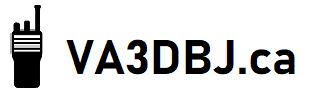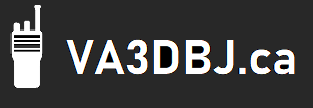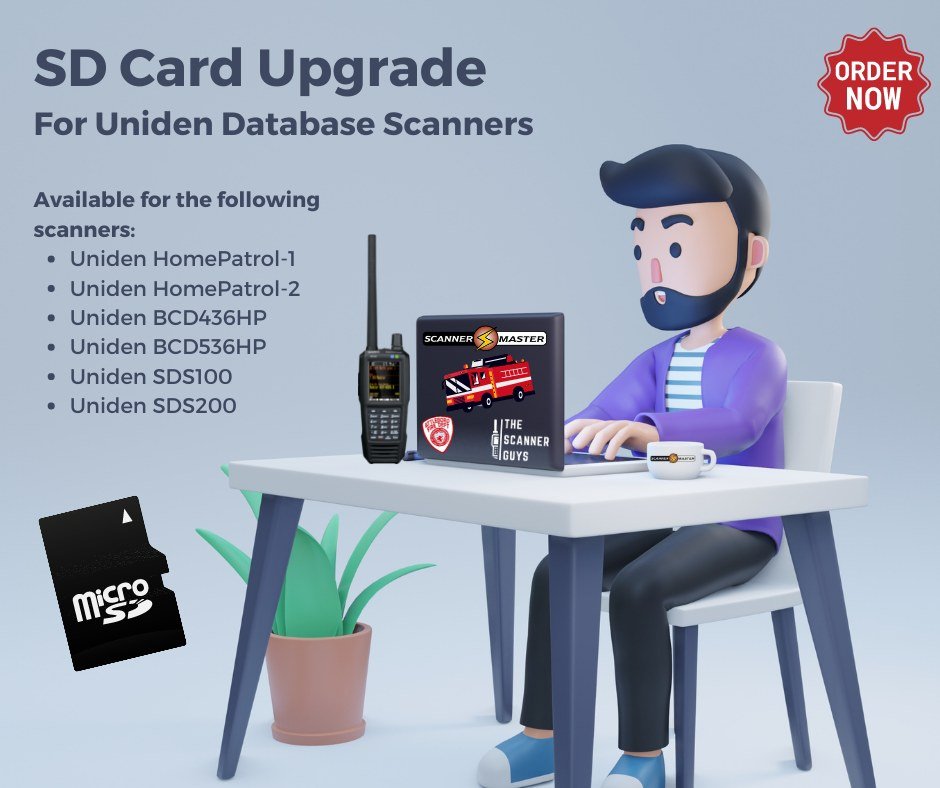Update
FROM: RAC.ca
The global pandemic continues and we want to make sure that all participants in the RAC Canada Day Contest on Thursday, July 1 help us to celebrate Canada’s birthday safely.
The RAC Contest Committee is therefore asking all participants in the Canada Day Contest 2021 to follow the guidelines provided by the government and health officials in your respective area for any of the multi-op categories enabled within the contest.
If you do carry out an operation in any of the multi-op categories, please advise as part of your log submission that you have followed your locally applicable guidelines for group sizes and social (physical) distancing.
Special thanks to our sponsors for their support of the RAC contests.
We hope to hear you on the air for the July 1, 2021 Canada Day contest (00:00 UTC through 23:59:59 UTC). Don’t forget to share your stories with us at [email protected] and to use #RACCD.
RAC Canada Day Contest Rules 2021
Each year on July 1, the anniversary of Canada’s Confederation, Radio Amateurs of Canada sponsors the Canada Day Contest and Amateurs all over the world are invited to Canada’s Birthday Party on the air.
https://docs.google.com/viewer?url=https%3A%2F%2Fwww.rac.ca%2Fwp-content%2Fuploads%2F2021%2F05%2FCanadaDayContestRules2021_English.pdf&hl=en_US&embedded=true
Contest Period: 0000 UTC to 2359 UTC July 1, 2021.
Bands and Modes: 160, 80, 40, 20, 15, 10, 6 and 2 metres, CW and phone (SSB, FM, AM, etc.)
Suggested frequencies: CW – 25 kHz up from the band edge and for SSB – 1850, 3775, 7075, 7225, 14175, 21250, 28500 kHz. Check for CW activity on the half-hour.
*Note: For 7075 kHz please watch for conflicts in the band plan where there are overlaps with other modes of operation.
Exchange: Stations in Canada send RS(T) and province or territory. VEØs and stations outside Canada send RS(T) and a serial number.
QSOs: Contacts with stations in Canada or VEØs are worth 10 points. Contacts with stations outside Canada are worth 2 points. Contacts with RAC official stations are worth 20 points. RAC official stations are: VA2RAC, VA3RAC, VE1RAC, VE4RAC, VE5RAC, VE6RAC, VE7RAC, VE8RAC, VE9RAC, VO1RAC, VO2RAC, VY0RAC, VY1RAC and VY2RAC. You may work any station once on each of the two modes, on each of the eight contest bands.
It is prohibited to make CW contacts in the conventional phone sub-bands and phone contacts in the conventional CW sub-bands. Contacts or soliciting QSOs through a repeater during the contest period is not allowed.
Multipliers: Thirteen in total, Canada’s 10 provinces and three territories. Each multiplier may be counted once on each mode on each of the eight contest bands. The multipliers, with their postal abbreviations and prefixes are: Nova Scotia [NS] (VE1, VA1, CY9, CYØ); Quebec [QC] (VE2, VA2); Ontario [ON] (VE3, VA3); Manitoba [MB] (VE4, VA4); Saskatchewan [SK] (VE5, VA5); Alberta [AB] (VE6, VA6); British Columbia [BC] (VE7, VA7); Northwest Territories [NT] (VE8); New Brunswick [NB] (VE9); Newfoundland and Labrador [NL] (VO1, VO2); Nunavut [NU] (VYØ); Yukon [YT] (VY1); and Prince Edward Island [PE] (VY2). Certain special Canadian prefixes in use at the time of the contest may also apply; however there may be no more than 13 multipliers on each band/mode. Please use the multiplier abbreviations, in square brackets, noted above.
Note: in the event a station is unable to make a contact with a Canadian station, there will be granted a multiplier count of 1 to facilitate the proper calculation of the final score since a multiplier of zero (0) would not create a valid calculation of a final score.
Final Score: The total QSO from all bands multiplied by the total number of multipliers from all bands.
Categories: The following nine categories are eligible for plaques or certificates as detailed in the Awards section of the rules.
- Single Operator All Bands High Power (>100 watts) – Radioworld
- Single Operator All Bands Low Power (max. 100 watts output) – Contest Club Ontario
- Single Operator QRP (max. 5 watt output) All Bands & Single Band ** – Radioworld
- Single Operator All Bands CW only, any authorized power – Gary Bartlett VE1RGB Memorial by the Maritime Contest Club
- Single Operator All Bands PH only, any authorized power – Saskatchewan Contest Club
- Single Operator Single Band, any authorized power *** – Radioworld
- Multi-Operator Single Transmitter High Power (>100 watts) * – Alfa Radio Ltd
- Multi-Operator Single Transmitter Low Power (max. 100 watts output) * – Tony Allsop VE3FTA Memorial by the Mississauga Amateur Radio Club
- Multi-Operator Multi-Transmitter, any authorized power – Radioworld
- For the Canada Day Contest a special trophy is awarded for the highest Single Operator (no power classification) Foreign Entrant – Larry Kayser VA3LK Memorial by Alan Goodacre, VE3HX.
Special thanks to our sponsors for their support of the RAC contests.
Category notes: Please check website for any revisions due to the current global pandemic.
1) The contents of a log that is submitted for a specific category must reflect that category. In the event of a conflict between the actual content of the log and the stated category in the Cabrillo header or contained in other elements of the entry material, the actual contents of the log will be used to determine the category of entry where possible. In the event this cannot be determined or in the event where a log does not identify the entry category, the entry will be classified into the Multi-Operator, Multi-Transmitter, any authorized power category.
Any entrant who wants to enter a specific category (i.e. Single band entry) but who also worked additional contacts outside that category may submit those additional contacts in a separate check log file. Do not include them in the main entered category log file.
2) Where the categories have a power class and the submitted log does not clearly identify the power class entered, then the log will be treated as if the highest power class for that category was entered.
3) Single operators who receive assistance from a DX spotting system, including Skimmer and similar technologies or any type of Packet Cluster network during the contest must classify themselves as Multi-Single ops.
4) * In the Multi-Single category only one transmitter and one band are permitted during the same time period (defined as 10 minutes). Exception: One, and only one, other band may be used during any 10-minute period, if and only if the station worked is a new multiplier. In other words the Multi-Single Transmitter class allows a second station to “hunt” and work multipliers only on a single separate band during any 10-minute period.
5) Multi-Multi category stations may operate on several bands simultaneously.
6) For all multi transmitter categories, all transceivers, transmitters and receivers operated by the multi station participants/entrants must be within a single 500-metre diameter circle and the antennas must be physically connected by RF transmission lines to the transceivers, transmitters and/or receivers.
7) Operators in either the Multi-Multi or Multi-Single categories should note that a distributed contest station is permitted in the RAC contests, however such operations are not eligible for awards. A distributed station is defined as a station which does not have all transceivers, transmitters and/or receivers operated by station operators/participants/entrants located within a single 500-metre diameter circle of each other. Distributed Multi-Multi operations must identify such operations as part of their Cabrillo form log submission or summary sheet document.
8) ** Although there is only one QRP category, which qualifies for a plaque or certificate, it is intended that the published results would show All Bands or the Single Band of operation.
To facilitate this break out of the listings, your entry should indicate the band(s) or mode(s) operated.
9) *** Although there is only one Single Operator Single Band category that qualifies for a certificate or award, it is intended that the published results would show High Power or Low Power.
To facilitate this break out of the listings, your entry should indicate the power class you used.
10) Operators who have participated in any multi-operator category entries may not contact the station they have participated in if they were to operate as part of another entry in the same contest. In addition, guest operators at any station regardless of entry category may not claim contacts with the station host owner or host station mobile call for points or multipliers.
Awards: Plaques will be awarded to the top-scoring entrants in each category, as noted above in the category list. Special thanks to our sponsors for their ongoing support! Certificates will be awarded to the top-scoring entrant in the categories described below.
- Canadian provinces or territories
- Continental US call districts, W0 through W9 as well as Alaska and Hawaii. US Commonwealths, Territories and Possessions such as Puerto Rico, US Virgin Islands, etc will be treated as equivalent to a DXCC country
- DXCC country, excluding Canada and the US.
To facilitate the proper allocation of certificates, all US stations should indicate their actual US call district based on their actual address, as provided in the Cabrillo header, if different than indicated by their call prefix. DX stations should indicate the actual country of operation if different than indicated by their call prefix by indicating the country as part of the portable call sign designator.
RAC stations will compete and be considered the same as any other entrant for eligibility to plaques and certificates.
Results: Will be published in The Canadian Amateur magazine published by the Radio Amateurs of Canada. The results will also be published on the RAC website at:
/contesting-results/
Entries: All entries (electronic or paper logs) must be postmarked or electronically submitted by July 31, 2021. Electronic entries will be confirmed by return email. Send email entries to: [email protected]
Send paper entries to:
Radio Amateurs of Canada
720 Belfast Road, Suite 217
Ottawa, Ontario, Canada K1G 0Z5
We will be publishing a list of logs received and the categories entered on the RAC website during and/or after the submission period after the cut off date to assist in correcting any entry categorizations.
Paper mail entries must contain a summary sheet showing score calculation, a dupe sheet listing calls worked on each mode on each band, a multiplier check sheet and log sheets. Logsheets must show time, band, mode, call of station worked, exchanges sent and received and claimed for each QSO. New multipliers must be clearly marked in the log.
Contest entry forms are also available on the RAC website at: /contesting-results/
Any entry with 100 or more contacts should be submitted in digital format. The preferred electronic format is the RAC Cabrillo format. The files must be submitted in plain ASCII/Text format.
While the contest committee prefers Cabrillo formatted submissions, we will continue to accept electronic logs from older versions of contest software, but your file must be in ASCII/Text format and have all the required information. However “.adi” files are not acceptable.
Given there are several free programs that support the RAC contests and generate an acceptable Cabrillo entry, we encourage you to seek out one of these programs.
The RAC Cabrillo format is described and its detailed layout is shown on the RAC website at: /contesting-results/
Electronic logs that do not have a complete Cabrillo header should provide a summary sheet with the same information as shown for the paper log entries. The standard summary sheet provided by the typical logging program is generally acceptable, but you should confirm that it contains the same information as shown for paper log entries.
A properly filled out Cabrillo header section will be a sufficient substitute for a summary sheet for logs submitted in that format. Please ensure that you review the header for accuracy and that it is completely fill out. Name your file with your Call Sign and the file extension.LOG (e.g., yourcall.LOG). If you email your log, please send the file(s) as attachments.
Do not paste the log file into the text of your message as there may be issues with the formatting making it difficult to properly extract the log. Large files may be zipped if necessary.
If you need help with preparing or emailing your log or have any other questions, please contact Bart Ritchie, VE5CPU, [email protected]
For the previous year’s contest results, visit the RAC website at /contesting-results/ in the Contest section.










